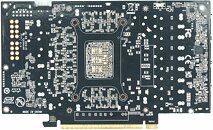
NVIDIA DLSS 4 Coming To MechWarrior 5: Clans, New World: Aeternum, and More Games
More than 700 games and applications feature RTX technologies, and each week new games integrating NVIDIA DLSS, NVIDIA Reflex, and advanced ray-traced effects are released or announced, delivering the definitive PC experience for GeForce RTX players. This week and next, DLSS 4 with Multi Frame Generation will be multiplying frame rates in MechWarrior 5: Clans, New World: Aeternum, and Spirit of the North 2.
Additionally, DLSS Super Resolution is available now or coming soon to Bodycam, Lost Skies, Mandragora: Whispers of the Witch Tree, and Necrophosis. You can also enjoy them all with a new GeForce RTX 5060 or GeForce RTX 5060 Laptop GPU, which will hit shelves through our add-in-card, system, OEM, and retail partners starting May 19 at 9 a.m. Pacific Time.
Additionally, DLSS Super Resolution is available now or coming soon to Bodycam, Lost Skies, Mandragora: Whispers of the Witch Tree, and Necrophosis. You can also enjoy them all with a new GeForce RTX 5060 or GeForce RTX 5060 Laptop GPU, which will hit shelves through our add-in-card, system, OEM, and retail partners starting May 19 at 9 a.m. Pacific Time.

































































